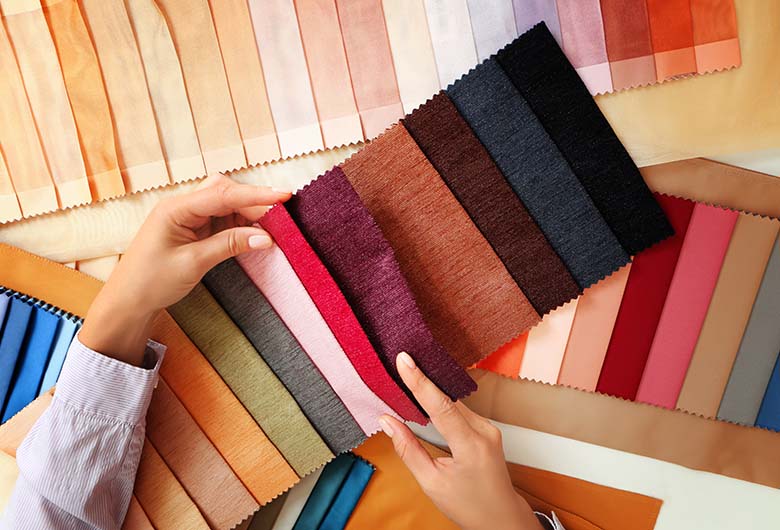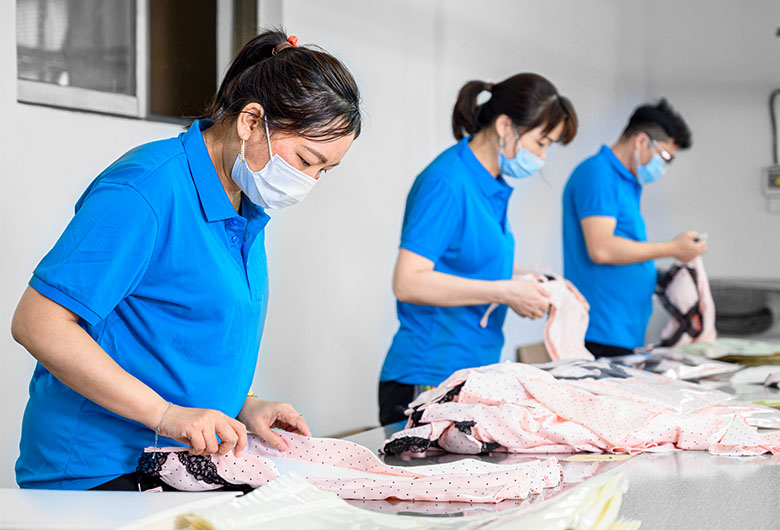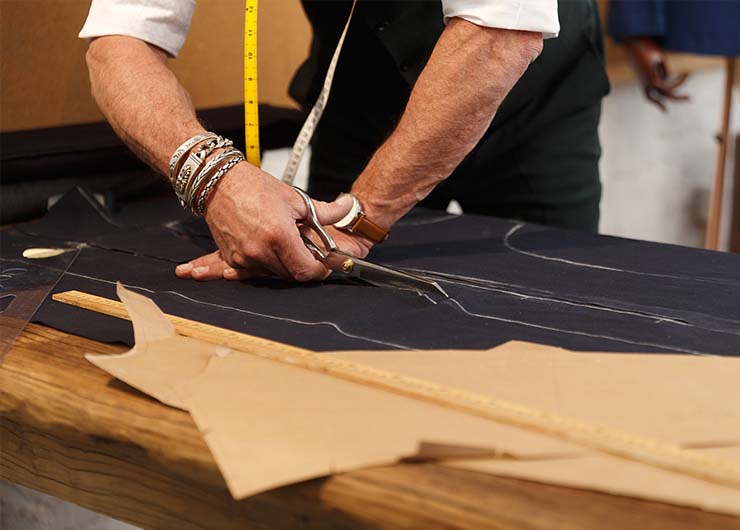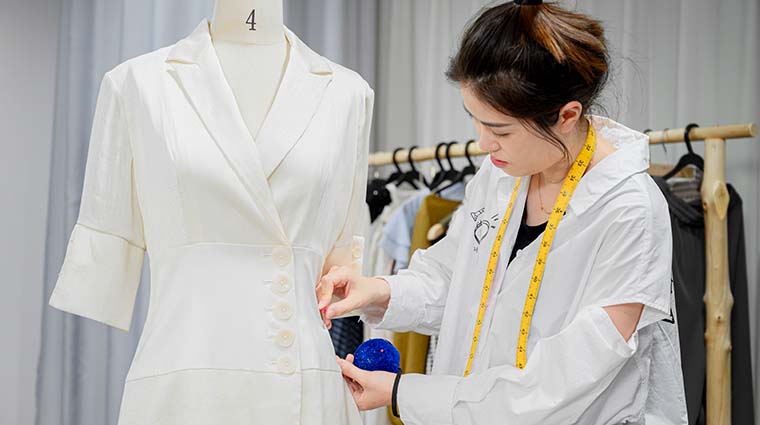Clothing manufacturing is a complex process that involves several stages, from designing and pattern-making to cutting, sewing, and finishing. As a women’s clothing manufacturer, it’s important to have a thorough understanding of the clothing manufacturing process to ensure that your products are of high quality and meet the expectations of your customers. In this blog, we will provide a brief overview of the clothing manufacturing process and discuss the importance of understanding the process of clothing manufacturing. Whether you specialize in dresses manufacturing, skirts manufacturer, or tailor-made clothing in bulk, this guide will provide you with valuable insights into the clothing manufacturing process.

Design and Pattern Making
The first stage of the clothing manufacturing process is design and pattern making. This stage involves creating a design concept and turning it into a pattern that can be used to create the garment. As a women’s clothing manufacturer, it’s important to have a strong design team that can create unique and innovative designs that will appeal to your target market.
1. Creation of a Design Concept
The design concept is the first step in the clothing manufacturing process. It involves creating a vision for the garment, including the style, color, and fabric. The design team will work closely with the client to understand their needs and preferences and create a design that meets their requirements. Once the design concept is finalized, the team will move on to the pattern-making stage.
2. Turning the Design into a Pattern
The pattern-making stage involves creating a pattern that can be used to create the garment. This involves taking the design concept and turning it into a 2D pattern that can be used to cut the fabric. The pattern maker will use specialized software to create the pattern, taking into account the size and shape of the garment. Once the pattern is created, it will be tested and adjusted to ensure that it fits correctly.
3. Pattern Grading and Marking
Pattern grading involves creating patterns in different sizes to accommodate different body types. This is an important step in the clothing manufacturing process, as it ensures that the garment will fit correctly on a range of body types. Once the pattern is graded, it will be marked with notches and symbols that indicate where to cut and sew the fabric. This is an important step in the process, as it ensures that the garment is assembled correctly.

Fabric Selection and Preparation
Choosing the right fabric is crucial to the success of the garment. The fabric should be selected based on the design and purpose of the garment. As a women’s clothing manufacturer, it’s important to have a good understanding of different fabrics and their properties to ensure that you choose the right fabric for each garment.
1. Choosing the Right Fabric for the Design and Purpose of the Garment
The fabric should be chosen based on the design and purpose of the garment. For example, if the garment is a summer dress, lightweight and breathable fabric such as cotton or linen would be a good choice. If the garment is a formal dress, a more structured fabric such as silk or satin would be more appropriate. The fabric should also be chosen based on the color and pattern of the garment, as well as the target market.
2. Fabric Preparation and Pre-Treatment
Once the fabric is selected, it needs to be prepared and pre-treated before it can be used to create the garment. This involves washing, drying, and ironing the fabric to remove any dirt, dust, or wrinkles. The fabric may also need to be pre-treated with chemicals to improve its properties, such as water resistance or flame retardancy. This is an important step in the process, as it ensures that the fabric is clean and ready to be used to create the garment.
Therefore, choosing the right fabric and preparing it properly is crucial to the success of the garment. As a women’s clothing manufacturer, it’s important to have a good understanding of different fabrics and their properties to ensure that you choose the right fabric for each garment. By selecting the right fabric and preparing it properly, you can ensure that your garments are of high quality and meet the expectations of your customers.

Cutting
The cutting stage is where the fabric is cut according to the pattern. This is a critical stage in the clothing manufacturing process, as any mistakes made during cutting can result in a poorly fitting garment. As a women’s clothing manufacturer, it’s important to have skilled workers who can cut the fabric accurately and efficiently.
1. Laying out the Pattern Pieces on the Fabric
Before cutting the fabric, the pattern pieces need to be laid out on the fabric. This involves arranging the pattern pieces on the fabric in a way that minimizes waste and ensures that the fabric is cut in the correct direction. The pattern pieces are then pinned to the fabric to hold them in place while cutting.
2. Cutting the Fabric According to the Pattern
Once the pattern pieces are laid out on the fabric, the fabric is cut according to the pattern. This involves using specialized cutting tools, such as scissors or a rotary cutter, to cut the fabric along the edges of the pattern pieces. The fabric is cut carefully and accurately to ensure that the pieces fit together correctly during assembly.

Sewing
The sewing stage is where the fabric pieces are assembled to create the garment. This is a crucial stage in the clothing manufacturing process, as it determines the quality and durability of the garment. As a women’s clothing manufacturer, it’s important to have skilled workers who can sew the fabric pieces together accurately and efficiently.
1. Assembly of the Garment
The assembly of the garment involves sewing the fabric pieces together according to the pattern. This involves using different types of sewing techniques, such as straight stitching, zigzag stitching, and overlocking. The fabric pieces are sewn together carefully and accurately to ensure that the garment fits correctly and is comfortable to wear.
2. Different Types of Sewing Techniques
There are different types of sewing techniques that are used during the sewing stage. The type of sewing technique used depends on the type of fabric and the design of the garment. For example, a straight stitch is used for seams that need to be strong and durable, while a zigzag stitch is used for seams that need to be flexible and stretchy. Overlocking is used to finish the edges of the fabric to prevent fraying.
3. Quality Control During the Sewing Process
Quality control is an important part of the sewing process. This involves checking the fabric pieces and the finished garment for any defects or flaws. Any issues that are found are corrected before the garment is sent to the next stage of the manufacturing process. This ensures that the garment is of high quality and meets the expectations of the customer.
As a women’s clothing manufacturer, it’s important to have skilled workers who can sew the fabric pieces together accurately and efficiently. By using different types of sewing techniques and implementing quality control measures, you can ensure that your garments are of high quality and meet the expectations of your customers. So, if you are looking for a reliable manufacturer for dresses manufacturing, skirts manufacturer, or tailor-made clothing in bulk, make sure to choose a manufacturer who has skilled workers and implements quality control measures during the sewing process.

Finishing
The finishing stage is where the garment is completed and prepared for sale. This involves trimming excess threads and fabrics, pressing and ironing the garment, and adding labels and tags. As a women’s clothing manufacturer, it’s important to have skilled workers who can complete the finishing stage accurately and efficiently.
1. Trimming Excess Threads and Fabrics
Before the garment can be sold, any excess threads and fabrics need to be trimmed. This involves using scissors or a thread cutter to remove any loose threads or excess fabric that may be sticking out. This is an important step in the process, as it ensures that the garment looks neat and tidy.
2. Pressing and Ironing
Once the excess threads and fabrics have been trimmed, the garment needs to be pressed and ironed. This involves using a steam iron to remove any wrinkles and creases in the fabric. This is an important step in the process, as it ensures that the garment looks professional and is ready to be worn.
3. Adding Labels and Tags
The final step in the finishing stage is to add labels and tags to the garment. This involves attaching labels that indicate the size, care instructions, and brand name of the garment. This is an important step in the process, as it ensures that the garment is properly labeled and ready for sale.

Quality Control
Quality control is an essential part of the clothing manufacturing process. As a women’s clothing manufacturer, it’s important to ensure that your garments are of high quality and meet the expectations of your customers. This involves inspecting the finished garment for defects and testing for fit, comfort, and durability.
1. Inspection of the Finished Garment for Defects
Before the garment is shipped to the customer, it needs to be inspected for defects. This involves checking the garment for any issues such as loose threads, missing buttons, or incorrect stitching. Any defects that are found are corrected before the garment is shipped to the customer. This is an important step in the process, as it ensures that the garment is of high quality and meets the expectations of the customer.
2. Testing for Fit, Comfort, and Durability
In addition to inspecting the garment for defects, it’s also important to test the garment for fit, comfort, and durability. This involves trying on the garment to ensure that it fits correctly and is comfortable to wear. The garment is also tested for durability by washing and wearing it multiple times to ensure that it holds up well over time. This is an important step in the process, as it ensures that the garment is of high quality and meets the expectations of the customer.

Packaging and Shipping
The final stage of the clothing manufacturing process is packaging and shipping the garments to retailers or customers. This involves packing and preparing the garments for shipping to ensure that they arrive at their destination in good condition. As a women’s clothing manufacturer, it’s important to have a reliable shipping process in place to ensure that your garments are delivered on time and in good condition.
1. Packing and Preparing the Garments for Shipping
Before the garments can be shipped, they need to be packed and prepared for shipping. This involves folding the garments neatly and placing them in packaging that protects them during shipping. The packaging may include boxes, bags, or envelopes, depending on the size and type of garment. The packaging should be sturdy and secure to ensure that the garments arrive at their destination in good condition.
2. Shipping the Garments
Once the garments are packed and prepared for shipping, they are ready to be shipped to retailers or customers. This involves using a reliable shipping service to ensure that the garments are delivered on time and in good condition. The shipping service should provide tracking information so that the customer can track the progress of their shipment.
Conclusion
In conclusion, as a women’s clothing manufacturer, it’s important to have a strong understanding of the clothing manufacturing process and maintain a strong focus on quality control and attention to detail. By doing so, you can ensure that your garments are of high quality and meet the expectations of your customers.



